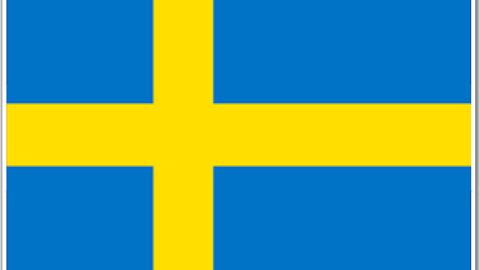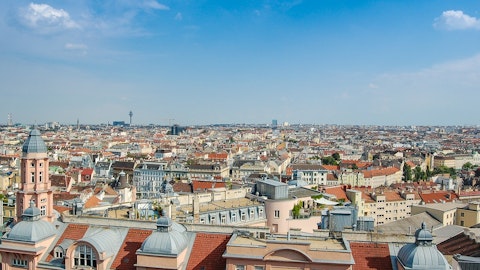In this article, we will look at the 25 countries with the highest percentage of women in the workforce. We have also discussed the state of the female workforce globally and its challenges. If you want to skip our detailed analysis, head straight to the 10 Countries with the Highest Percentage of Women in the Workforce.
Women play a crucial role in the global labor market, yet disparities persist across various dimensions. The Global Gender Gap Report 2023 revealed concerning trends as women continue to face disproportionate challenges in employment and leadership positions. Between 2019 and 2020, women’s labor-force participation declined by 3.4%, compared to 2.4% for men. While there has been a modest recovery since then, with parity in participation increasing from 63% to 64% between 2022 and 2023, major gaps remain. These gaps are particularly pronounced in regions like the Middle East and North Africa, where labor-force participation for women stands at only 30%.
Unemployment rates also reflect gender disparities, with women consistently facing higher rates than men, except during the peak of the pandemic in 2020. The International Labour Organization estimates the global unemployment rate at approximately 4.5% for women and 4.3% for men. Furthermore, women encounter greater challenges in their job searches and are less readily available to start work on short notice, contributing to higher rates of unemployment. To read more about unemployment, see the European Countries with the Highest Unemployment Rates.
Representation in senior leadership positions remains skewed, with women comprising only 32.2% of senior leadership roles globally in 2023, despite constituting 41.9% of the overall workforce. Industries such as Healthcare and Care Services show higher levels of gender diversity in leadership, while others, like Manufacturing and Infrastructure, lag behind significantly. Moreover, the “drop to the top” phenomenon illustrates how female representation declines as seniority level increases, highlighting persistent barriers to advancement for women in the workforce.
However, it is also worth highlighting that the landscape of women in the workforce is evolving, driven by increasing ambition and the growing importance of workplace flexibility. While women’s representation in C-suite positions has reached its highest point, there remains a major gap in the middle of the pipeline, particularly for women of color. According to the report, women represent roughly one in four C-suite leaders, and women of color just one in 16.
One of the key challenges identified is the “broken rung” phenomenon, which presents a huge obstacle for women’s advancement, particularly at the manager level. According to the report, in 2023, for every 100 men promoted from entry level to manager, only 87 women were promoted. This disparity disproportionately affects women of color, exacerbating existing inequalities in the corporate pipeline. Additionally, the report sheds light on the pervasive impact of microaggressions on women’s careers and well-being, emphasizing the need for organizations to create psychologically safe environments.
Despite these challenges, there is growing recognition of the value of workplace flexibility for both men and women. According to the report, roughly 80% of women want to be promoted to the next level, compared with 70 percent in 2019. Moreover, the pandemic and increased flexibility did not dampen women’s ambitions, as approximately one in five women say flexibility like remote work has helped them stay in their job or avoid reducing their hours. To read more about remote work, see the Highest Paying Jobs for Stay-at-Home Moms.
Despite efforts made since the Equal Pay Act, women in the US still earn significantly less than their male counterparts, with disparities widening for women of color. Thus, Intuit Inc (NASDAQ:INTU) recognizes these realities and actively works to counteract them, advocating for fairer tax policies and promoting access to tax credits and deductions that benefit women. By acknowledging and actively addressing the gender biases embedded in tax legislation, Intuit Inc (NASDAQ:INTU) aims to create a more equitable environment for all taxpayers, regardless of gender.
Furthermore, Intuit Inc (NASDAQ:INTU)’s dedication to gender equality extends beyond policy advocacy to supporting women facing disproportionate financial challenges. Single mothers and caregivers, especially those from lower-income households, bear the brunt of these disparities. Through initiatives like the Earned Income Tax Credit (EITC) and the Child Tax Credit (CTR), Intuit Inc (NASDAQ:INTU) strives to provide financial relief to these individuals.
On the other hand, Hilton Worldwide Holdings Inc (NYSE:HLT) is one of the best workplaces for females owing to its commitment to inclusivity and diversity, earning it the coveted #1 spot on the 2023 Fortune Best Workplaces for Women list. With a legacy spanning seven years on the list, Hilton Worldwide Holdings Inc (NYSE:HLT) prides itself on fostering an environment where women are not only valued but also supported and encouraged to excel in their roles. Through initiatives promoting career growth and development, Hilton Worldwide Holdings Inc (NYSE:HLT) ensures that every female team member feels empowered to reach their full potential.
The personal narratives of female General Managers at Hilton Worldwide Holdings Inc (NYSE:HLT) confirm the company’s dedication to gender equality. Teri, Misoon, and Ratna exemplify the diverse paths to leadership within Hilton Worldwide Holdings Inc (NYSE:HLT), showcasing how the company nurtures talent regardless of gender. From providing opportunities for advancement to offering travel benefits and a culture of open communication, Hilton Worldwide Holdings Inc (NYSE:HLT) creates a conducive environment where women can thrive professionally.

Photo by Remy Gieling on Unsplash
Our Methodology
To list the countries with the highest percentage of women in the workforce, we utilized the World Bank’s data on the percentage of Female Labor force (% of total labor force), ensuring that the list is based on reliable and objective statistics. The female labor force percentages were acquired from World Bank data for the year 2023, for all 25 countries. The list is presented in ascending order.
By the way, Insider Monkey is an investing website that uses a consensus approach to identify the best stock picks of more than 900 hedge funds investing in US stocks. The website tracks the movement of corporate insiders and hedge funds. Our top 10 consensus stock picks of hedge funds outperformed the S&P 500 stock index by more than 140 percentage points over the last 10 years (see the details here). So, if you are looking for the best stock picks to buy, you can benefit from the wisdom of hedge funds and corporate insiders.
25. Qatar
Female Labor Force Participation Rate: 64.1%
In Qatar, the participation of women in the workforce is significant, as highlighted by a study conducted by PwC Middle East. The report revealed that nearly half (44%) of women in the region have taken career breaks, often due to family and caregiving responsibilities. Despite this, women returning to the workforce could contribute approximately $385 billion to the GDP of nine countries in the MENA region.
24. Bhutan
Female Labor Force Participation Rate: 64.5%
As one of the countries with the most female workers, Bhutan boasts a relatively high rate of women in the workforce compared to many other countries. This is primarily attributed to various governmental initiatives promoting gender equality and women’s empowerment, such as policies supporting women’s education and access to employment opportunities.
23. Ghana
Female Labor Force Participation Rate: 65.3%
Initiatives like Divine Chocolate’s Women’s Cocoa Farming Training program and Global Mamas’ support for the textile industry have been instrumental in improving women’s participation in the workforce in Ghana. Such efforts not only provide valuable skills but also foster entrepreneurship, with Ghanaian women leading the charge. According to the Mastercard Index of Women’s Entrepreneurship, women now constitute 46.4% of all business owners in the country.
22. Peru
Female Labor Force Participation Rate: 65.9%
In Peru, economic shifts towards sectors like services and manufacturing have provided more job openings suitable for women. Cultural attitudes have also evolved, with more recognition of women’s contributions to the economy. Peru was also one of the countries with the highest percentage of women in the workforce in 2021.
21. Republic of the Congo
Female Labor Force Participation Rate: 66.9%
Government policies promoting gender equality, educational opportunities for women, and increasing urbanization have led to greater access to employment in the country. Economic necessity also plays a role, with many families relying on dual incomes. However, challenges such as gender discrimination and limited access to leadership positions persist.
20. Cameroon
Female Labor Force Participation Rate: 67.3%
Over recent years, Cameroon has made sincere efforts in promoting gender equality through legislative reforms and initiatives aimed at empowering women economically. Access to education has improved, allowing more women to acquire the skills necessary to enter the workforce. Furthermore, cultural attitudes towards women’s roles have evolved, with increasing acceptance of women pursuing careers outside of traditional domestic roles.
19. Azerbaijan
Female Labor Force Participation Rate: 67.4%
As one of the countries with the highest female labor force participation rate, women’s participation in the workforce in Azerbaijan has largely increased following the repeal of job restrictions that once hindered their employment opportunities. Formerly, laws from the Soviet era barred women from over 600 job roles, spanning various sectors like transportation, energy, and agriculture.
18. New Zealand
Female Labor Force Participation Rate: 67.6%
In the March 2023 quarter, New Zealand witnessed a remarkable increase in women’s participation in the workforce, marking a historic high. With the labour force participation rate increasing to 72% and the employment rate reaching 69.5%, both metrics achieved record levels since tracking began in 1986. Women particularly excelled, as their labour force participation rate rose to 67.7%, representing a steady upward trend over the past three decades.
17. Uganda
Female Labor Force Participation Rate: 67.6%
In Uganda, women’s participation in the labor force is crucial for economic growth and recovery. Despite efforts in closing gender gaps in entrepreneurial activity and workforce participation, challenges persist. Women face lower earnings compared to men, hindering economic empowerment.
16. Vietnam
Female Labor Force Participation Rate: 68.5%
Vietnam is one of the countries with the largest female workforce. The country has stood out for its remarkable performance, especially in terms of female labor force participation. It surpasses the top performers in advanced Western economies. Vietnam has maintained a female labor force participation rate of around 70% for over two decades, a noteworthy achievement unmatched even by developed countries.
15. Cambodia
Female Labor Force Participation Rate: 69.5%
In Cambodia, despite a higher female labor force participation rate compared to neighboring countries, women still face significant challenges in achieving pay parity and accessing higher-paying positions. According to the United Nations Development Programme (UNDP), in 2019, employed women constituted 41% of the female workforce, while men accounted for 54% of the male workforce. However, women are disproportionately represented in low-paid and low-skilled roles, with 38.8% self-employed compared to 36.8% of men, and 20.3% engaged in unpaid domestic work versus 9.3% of men.
14. Democratic People’s Republic of Korea
Female Labor Force Participation Rate: 69.7%
Education and propaganda campaigns in the country have promoted the importance of women’s roles in nation-building and production. However, despite high participation rates, women still encounter gender-based discrimination and limited opportunities for career advancement in a predominantly patriarchal society.
13. Iceland
Female Labor Force Participation Rate: 70.1%
Despite high female participation rate in the country’s workforce, Iceland’s first full-day women’s strike in 48 years last year aimed to close 21% gender pay gap and combat gender-based violence. Led by Prime Minister Katrín Jakobsdóttir and tens of thousands of participants, it highlighted persistent challenges despite Iceland’s global gender equality reputation.
Iceland is also one of the countries with the shortest working hours in the world.
12. South Sudan
Female Labor Force Participation Rate: 70.3%
Despite similar labor force participation rates between genders, vulnerable employment remains high, with 94.2% of women and 81.1% of men in vulnerable employment in 2022. Moreover, access to financial services, decision-making processes, and ownership rights is limited for women.
11. Eritrea
Female Labor Force Participation Rate: 71.4%
Cultural and societal norms in Eritrea often dictate that women contribute to household income alongside men, leading to a greater number of women entering the workforce. Additionally, economic necessity drives many women to seek employment to support themselves and their families, especially in a country where economic opportunities may be limited.
Click here to see the 10 Countries with the Highest Percentage of Women in the Workforce.
Suggested Articles:
- Female Smoking Rates by Country: Top 20
- 30 Safest Cities in the World for Solo Female Travelers to Visit
- 25 Cities with Highest Female to Male Ratio in the World
Disclosure: None. 25 Countries with the Highest Percentage of Women in the Workforce is originally published on Insider Monkey.





